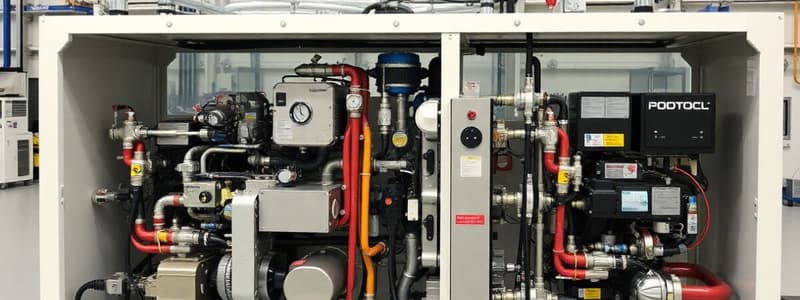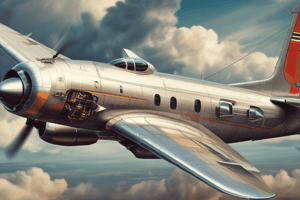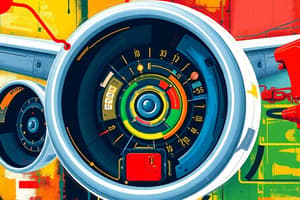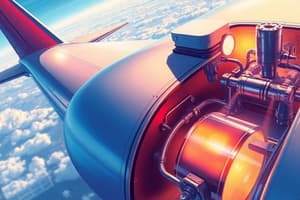Podcast
Questions and Answers
What allows fuel from one wing to be used by the opposite engine in an emergency?
What allows fuel from one wing to be used by the opposite engine in an emergency?
- Bladder type fuel cells
- Independent fuel systems
- Fuel pressure indicators
- Crossfeed connection (correct)
Where are the bladder type fuel cells located?
Where are the bladder type fuel cells located?
- In the fuel storage tank
- Inside the instrument panel
- In the wing nacelles aft of the firewall (correct)
- In the engine compartment
What does the fuel quantity gauge/display indicate?
What does the fuel quantity gauge/display indicate?
- Amount of fuel remaining (correct)
- Fuel type remaining
- Fuel flow rate
- Fuel temperature
What kind of fuel systems are incorporated into each wing?
What kind of fuel systems are incorporated into each wing?
What components transmit the fuel quantity to the gauge/display?
What components transmit the fuel quantity to the gauge/display?
Flashcards are hidden until you start studying
Study Notes
Fuel System Overview
- Independent fuel systems in each wing allow engines to operate using separate fuel supplies.
- Two systems are interconnected by a crossfeed mechanism, enabling fuel transfer to the opposite engine during emergencies.
Fuel Cell Design
- Bladder type fuel cells are positioned in the wing nacelles, located behind the firewall for safety.
- Design ensures fuel is stored securely and can be accessed by engines as needed.
Instrumentation and Monitoring
- Each fuel system includes indicators to show fuel pressure and flow, displayed on the instrument panel.
- Fuel quantity gauges indicate remaining fuel levels through electric sending units located in each wing's fuel cells.
Studying That Suits You
Use AI to generate personalized quizzes and flashcards to suit your learning preferences.



